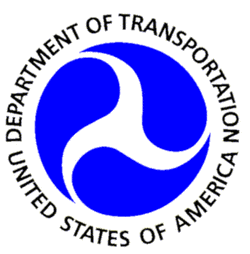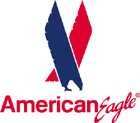American Eagle Airlines Fined For Lengthy Tarmac Delays
The U. S. DOT today fined American Eagle Airlines $900,000 for
lengthy tarmac delays that took place at Chicago O’Hare
International Airport on May 29, 2011. This is the first fine for a
violation of the Department’s rule, which took effect in
April 2010, setting a three-hour limit for tarmac delays on
domestic flights.

It also represents the largest penalty to be paid by an airline
in a consumer protection case not involving civil rights
violations. “We put the tarmac rule in place to protect
passengers, and we take any violation very seriously,” said
U.S. Transportation Secretary Ray LaHood. “We will work to
ensure that airlines and airports coordinate their resources and
plans to avoid keeping passengers delayed on the tarmac.”
Under DOT rules, U.S. airlines operating aircraft with 30 or
more passenger seats are prohibited from allowing their domestic
flights to remain on the tarmac for more than three hours at
large-, medium-, small- and non-hub U.S. airports without giving
passengers an opportunity to deplane. Exceptions to the time limits
are allowed only for safety, security or air traffic
control-related reasons. The rules require carriers to
include the three-hour provision in their tarmac delay contingency
plan commitments to passengers.
On May 29, 2011, American Eagle had tarmac delays of more than
three hours on 15 flights arriving at O’Hare. Those 15
flights had tarmac delays of up to 225 minutes, which was 45
minutes beyond the limit. A total of 608 passengers were aboard the
affected flights. An investigation by DOT’s Aviation
Enforcement Office concluded that while the airline had a procedure
in place to bring passengers subject to a tarmac delay back to the
gate, the carrier was late in implementing its procedure, resulting
in violations of the rule.

Under the consent order, which reflects a settlement by
DOT’s Aviation Enforcement Office with the carrier, American
Eagle is ordered to cease and desist from future violations of the
tarmac delay rule and is assessed a $900,000 civil penalty. A total
of $650,000 must be paid within 30 days, and up to $250,000 can be
credited for refunds, vouchers, and frequent flyer mile awards
provided to the passengers on the 15 flights on May 29, as well as
to passengers on future flights that experience lengthy tarmac
delays of less than three hours.
Between May 2010 and April 2011, the first 12 months after the
three-hour limit was in effect, the larger U.S. airlines required
to file tarmac delays reported 20 tarmac delays of more than three
hours, none of which was more than four hours long. In contrast,
during the 12 months before the rule took effect, these carriers
had 693 tarmac delays of more than three hours, and 105 of the
delays were longer than four hours.
Under an expansion of the tarmac delay rule that took effect
Aug. 23, 2011, international flights at covered U.S. airports are
now prohibited from remaining on the tarmac for more than four
hours without permitting passengers the opportunity to deplane,
subject to the same safety, security and air traffic
control-related exceptions as the rule for domestic flights.
 Classic Aero-TV: The Switchblade Flying Car FLIES!
Classic Aero-TV: The Switchblade Flying Car FLIES! ANN FAQ: Q&A 101
ANN FAQ: Q&A 101 ANN's Daily Aero-Term (04.12.24): Discrete Code
ANN's Daily Aero-Term (04.12.24): Discrete Code ANN's Daily Aero-Term (04.13.24): Beyond Visual Line Of Sight (BVLOS)
ANN's Daily Aero-Term (04.13.24): Beyond Visual Line Of Sight (BVLOS) ANN's Daily Aero-Linx (04.13.24)
ANN's Daily Aero-Linx (04.13.24)




